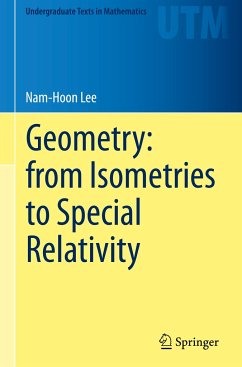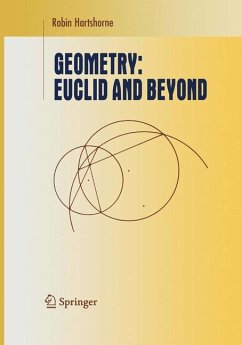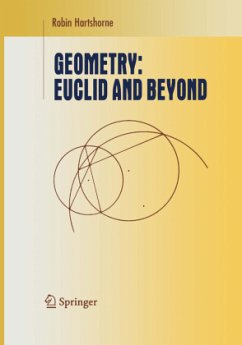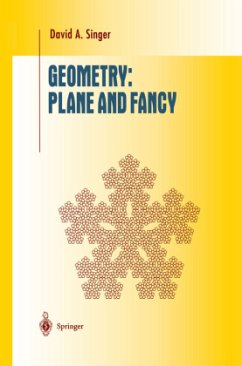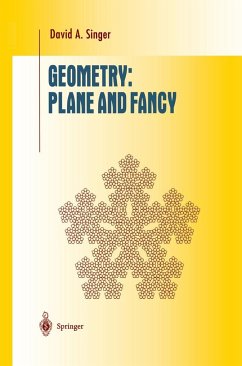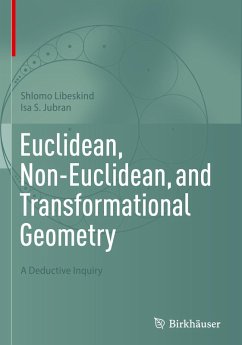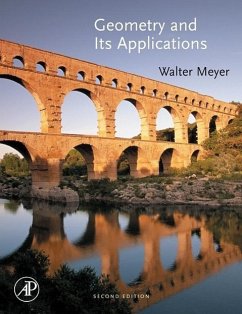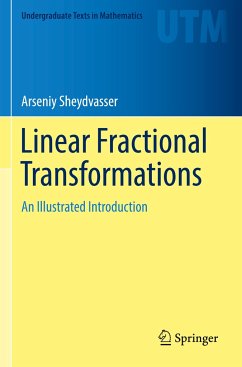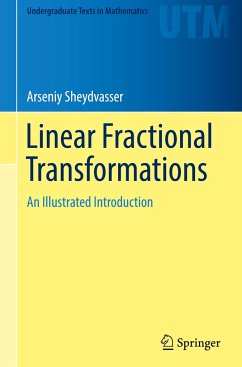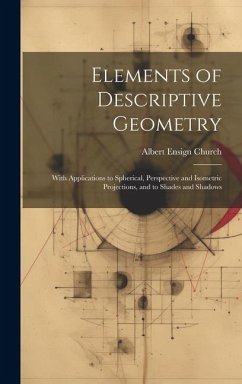
Geometry: from Isometries to Special Relativity
Versandkostenfrei!
Versandfertig in 6-10 Tagen
36,99 €
inkl. MwSt.
Weitere Ausgaben:

PAYBACK Punkte
18 °P sammeln!
This textbook offers a geometric perspective on special relativity, bridging Euclidean space, hyperbolic space, and Einstein's spacetime in one accessible, self-contained volume. Using tools tailored to undergraduates, the author explores Euclidean and non-Euclidean geometries, gradually building from intuitive to abstract spaces. By the end, readers will have encountered a range of topics, from isometries to the Lorentz-Minkowski plane, building an understanding of how geometry can be used to model special relativity.Beginning with intuitive spaces, such as the Euclidean plane and the sphere,...
This textbook offers a geometric perspective on special relativity, bridging Euclidean space, hyperbolic space, and Einstein's spacetime in one accessible, self-contained volume. Using tools tailored to undergraduates, the author explores Euclidean and non-Euclidean geometries, gradually building from intuitive to abstract spaces. By the end, readers will have encountered a range of topics, from isometries to the Lorentz-Minkowski plane, building an understanding of how geometry can be used to model special relativity.
Beginning with intuitive spaces, such as the Euclidean plane and the sphere, a structure theorem for isometries is introduced that serves as a foundation for increasingly sophisticated topics, such as the hyperbolic plane and the Lorentz-Minkowski plane. By gradually introducing tools throughout, the author offers readers an accessible pathway to visualizing increasingly abstract geometric concepts. Numerous exercises are also included with selected solutions provided.
Geometry: from Isometries to Special Relativity offers a unique approach to non-Euclidean geometries, culminating in a mathematical model for special relativity. The focus on isometries offers undergraduates an accessible progression from the intuitive to abstract; instructors will appreciate the complete instructor solutions manual available online. A background in elementary calculus is assumed.
Beginning with intuitive spaces, such as the Euclidean plane and the sphere, a structure theorem for isometries is introduced that serves as a foundation for increasingly sophisticated topics, such as the hyperbolic plane and the Lorentz-Minkowski plane. By gradually introducing tools throughout, the author offers readers an accessible pathway to visualizing increasingly abstract geometric concepts. Numerous exercises are also included with selected solutions provided.
Geometry: from Isometries to Special Relativity offers a unique approach to non-Euclidean geometries, culminating in a mathematical model for special relativity. The focus on isometries offers undergraduates an accessible progression from the intuitive to abstract; instructors will appreciate the complete instructor solutions manual available online. A background in elementary calculus is assumed.



